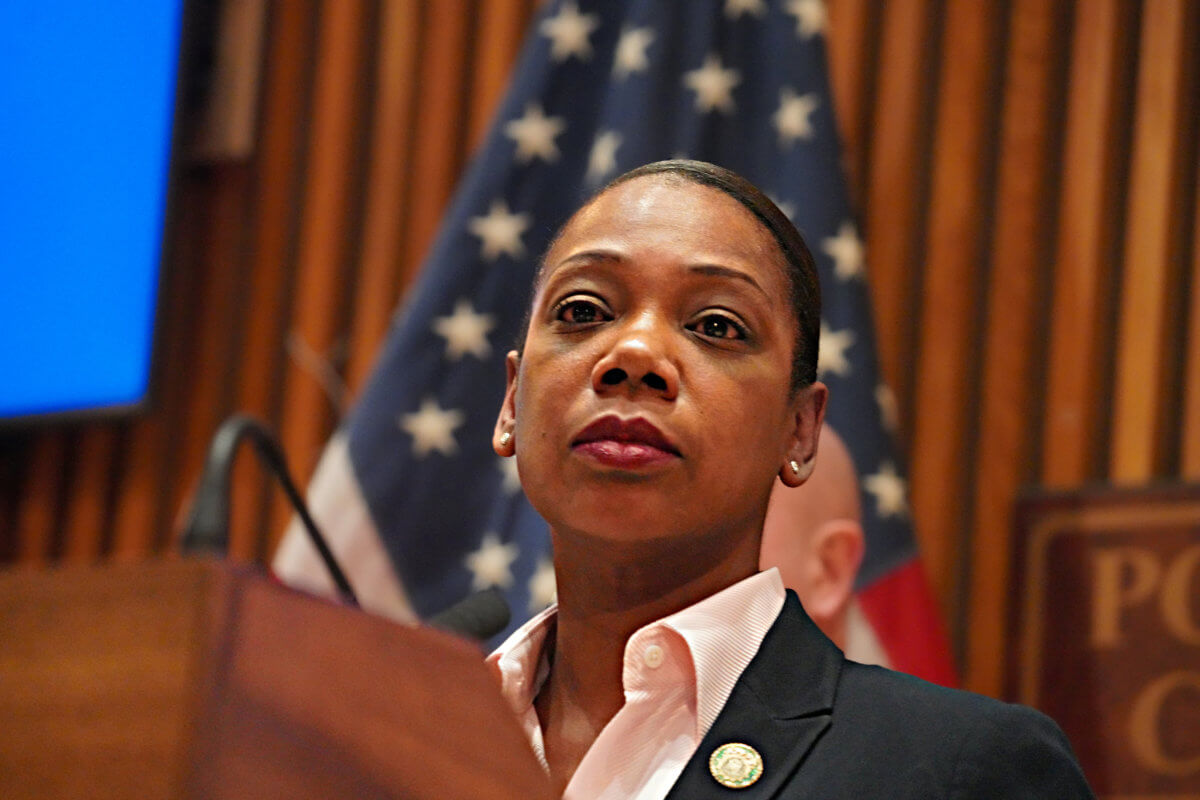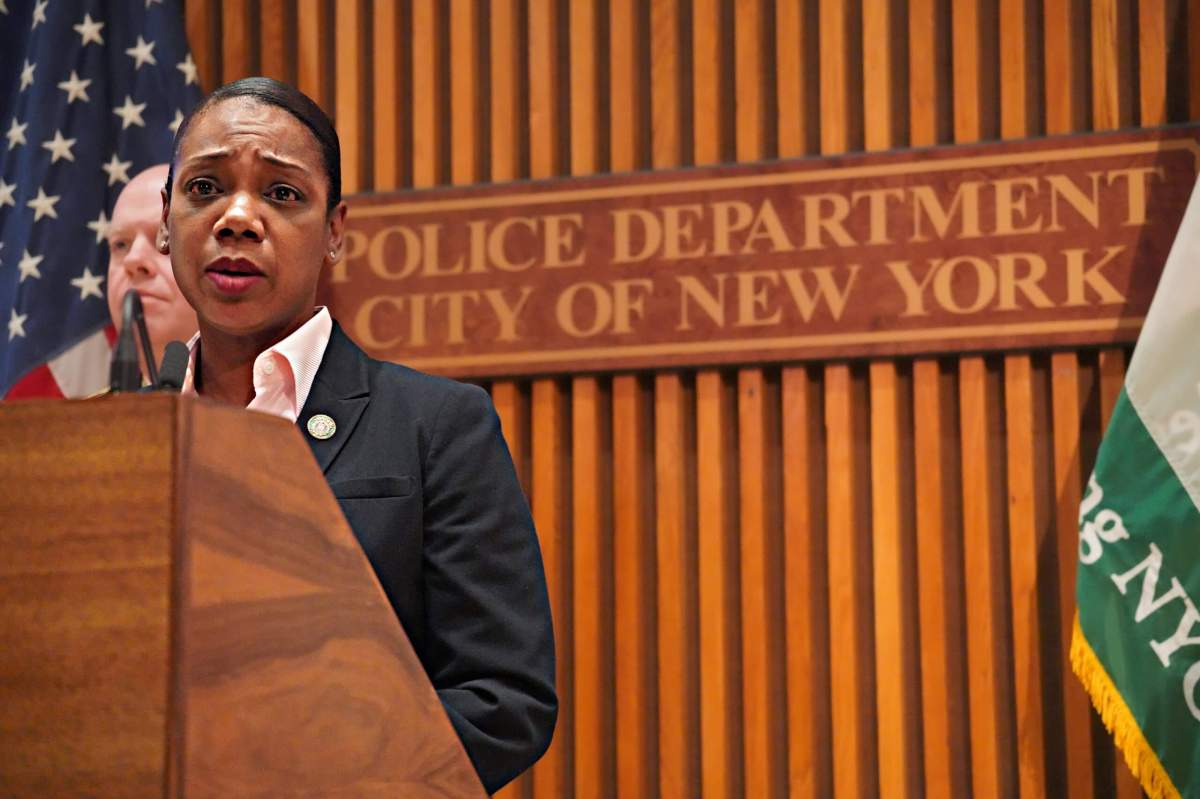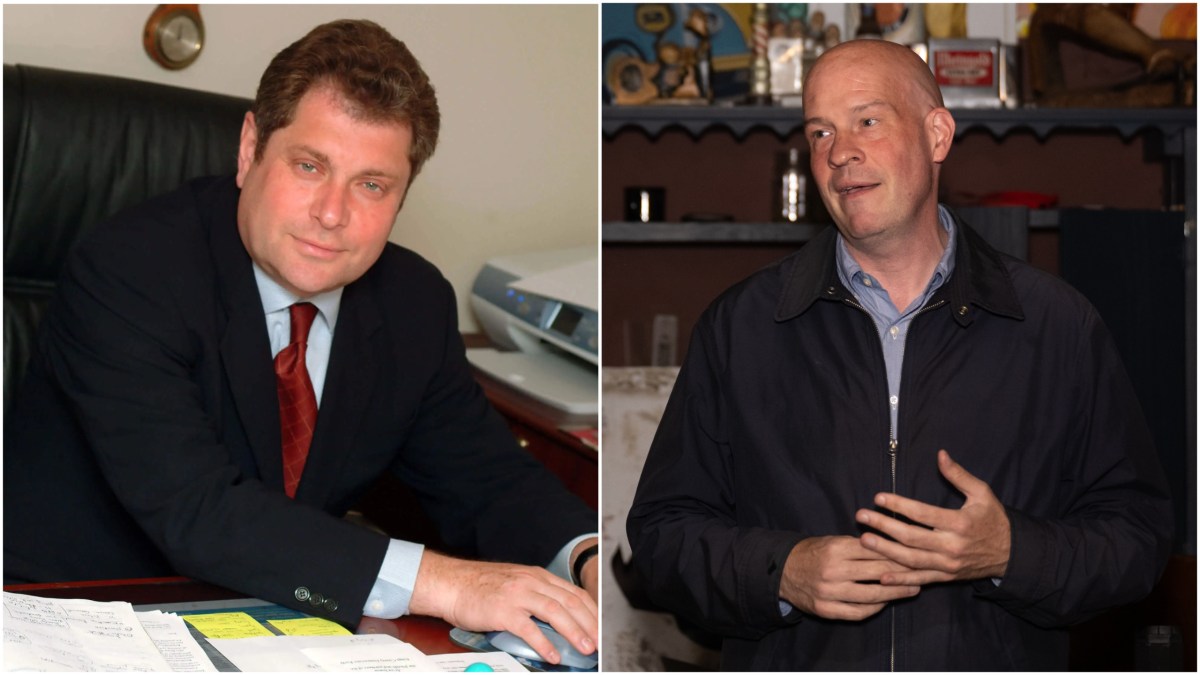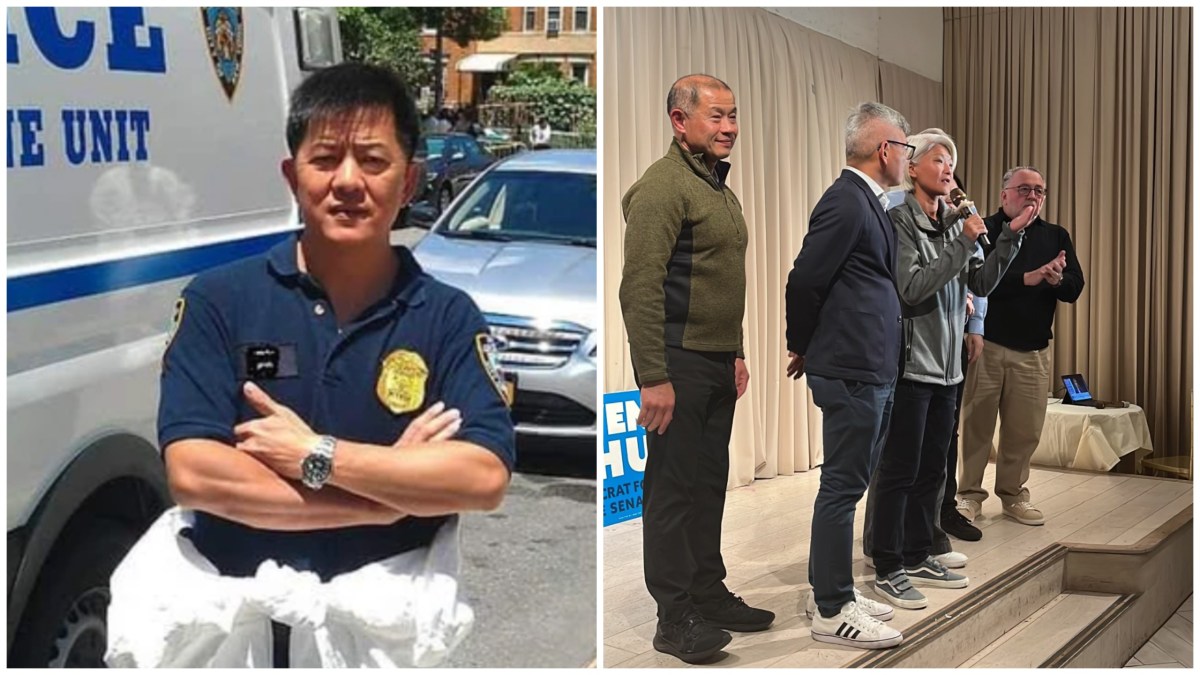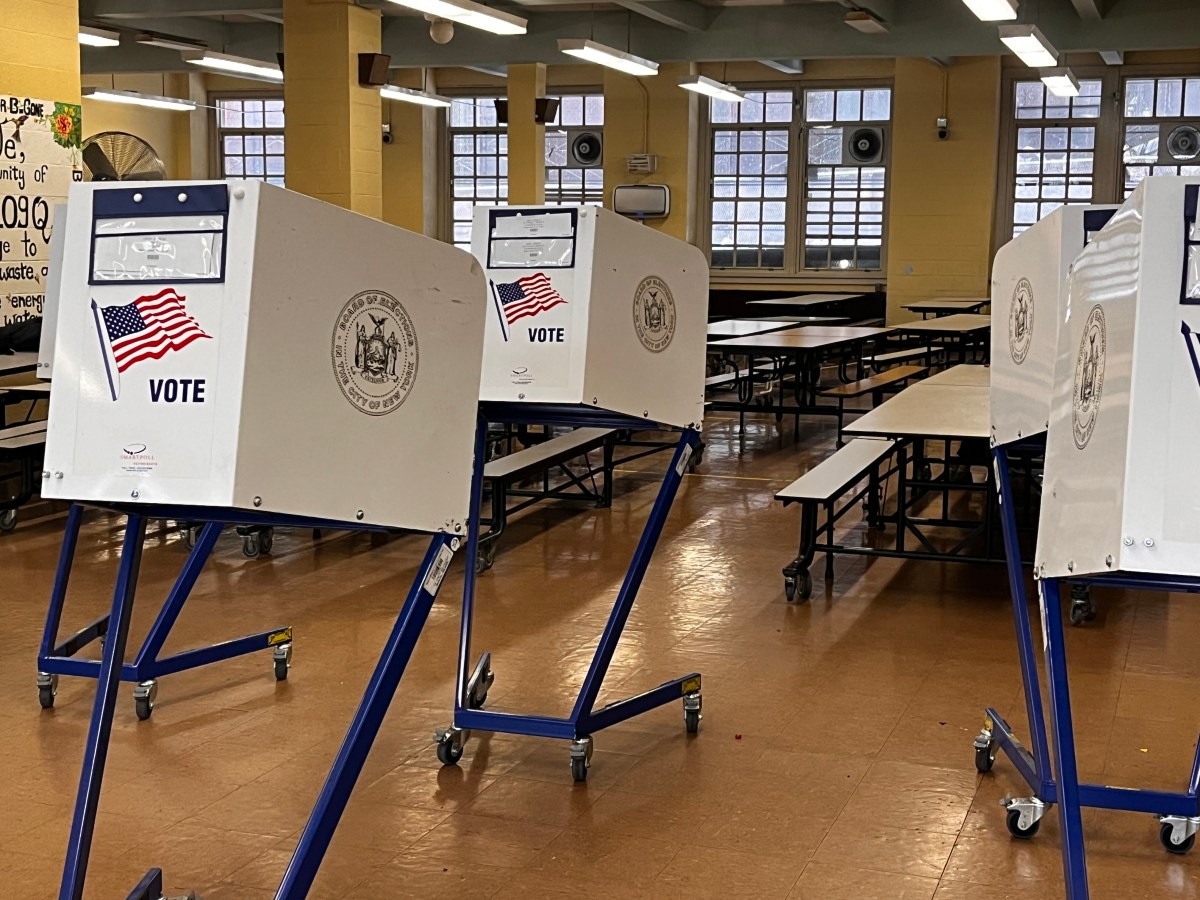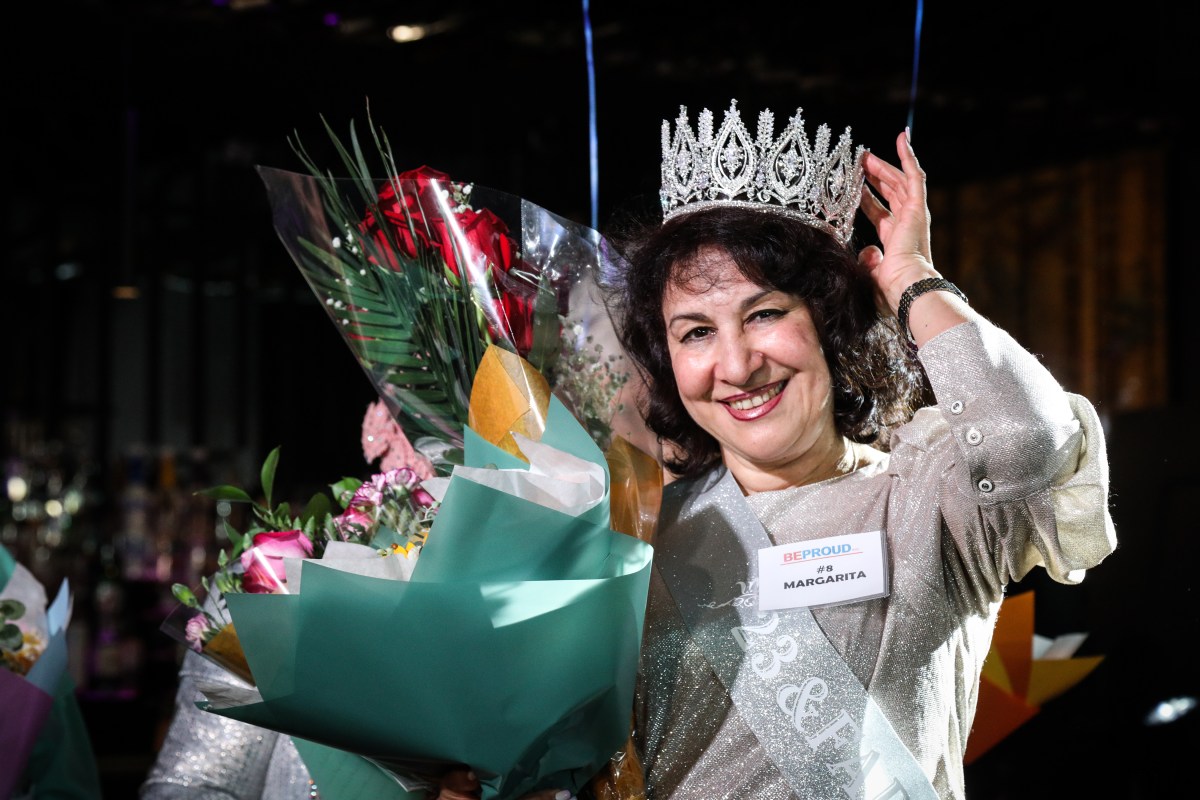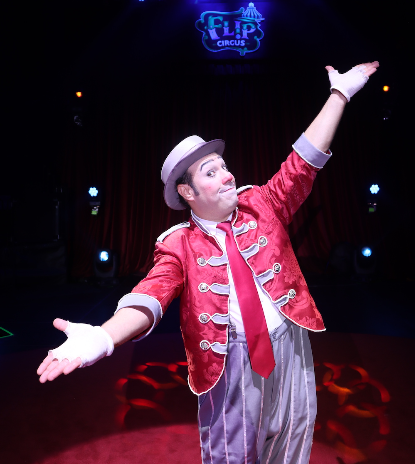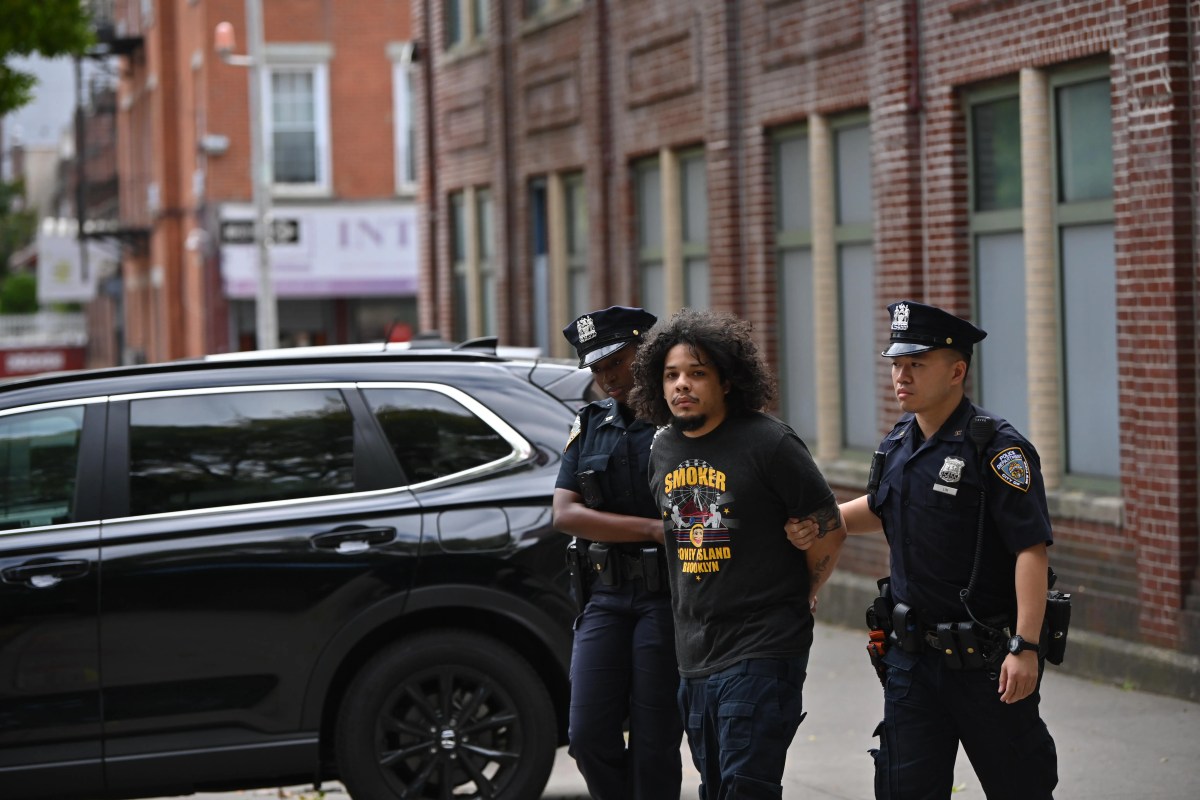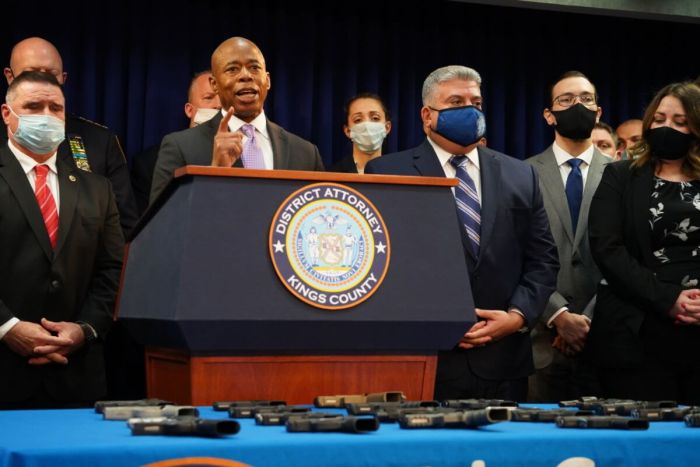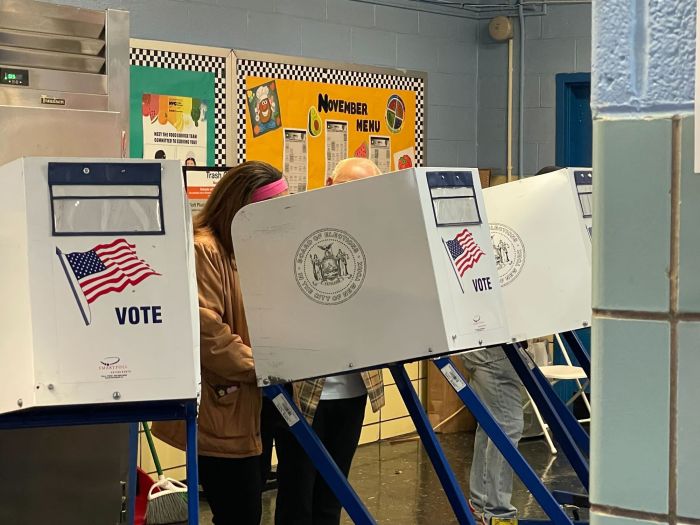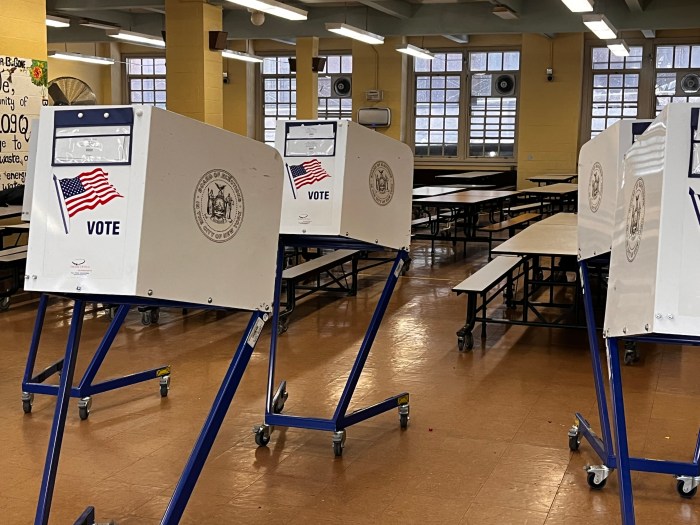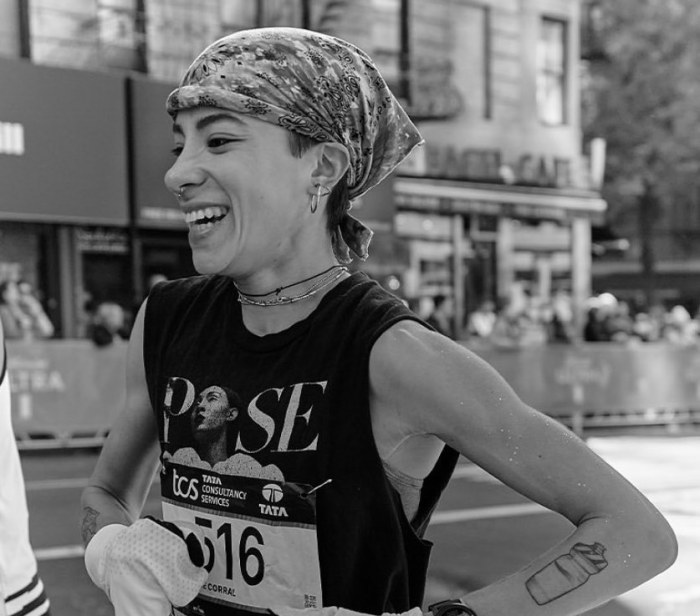The NYPD released new information regarding the department’s new Neighborhood Safety Teams, which is set to hit the streets Monday.
There has been a whirlwind of rumors swirling around New York City’s newest law enforcement units. However, Friday afternoon top NYPD officials looked to set the record straight.
NYPD’s top cop Keechant Sewell addressed an auditorium filled with members of the media on March 11 in hopes of dispelling what she feels are misconceptions surrounding the Neighborhood Safety Teams.
“We needed to take a look at the mistakes of the past and what we needed to change,” Sewell said. “So they’ve been undergoing this training and what is not really captured and what we really want to emphasize is that there’s also a community input proponent to this training as well, where we talk to the community and find out exactly what the changes are they’d like to see, what their concerns were in the past and what they can speak to.”
Chief of Department Kenneth Corey also spoke in response to the fears that this unit will foreshadow police brutality seen in decades past.
“These neighborhood safety teams will receive seven full days of training before they are deployed out. Many of them have already received training that includes team tactics, so the entire team of officers and the sergeant, so that they learn to work as a team. They are extensively trained in minimal force techniques. They receive advanced tactics, car stops, de-escalation is central, communication skills is a big part of that,” Chief Corey said.
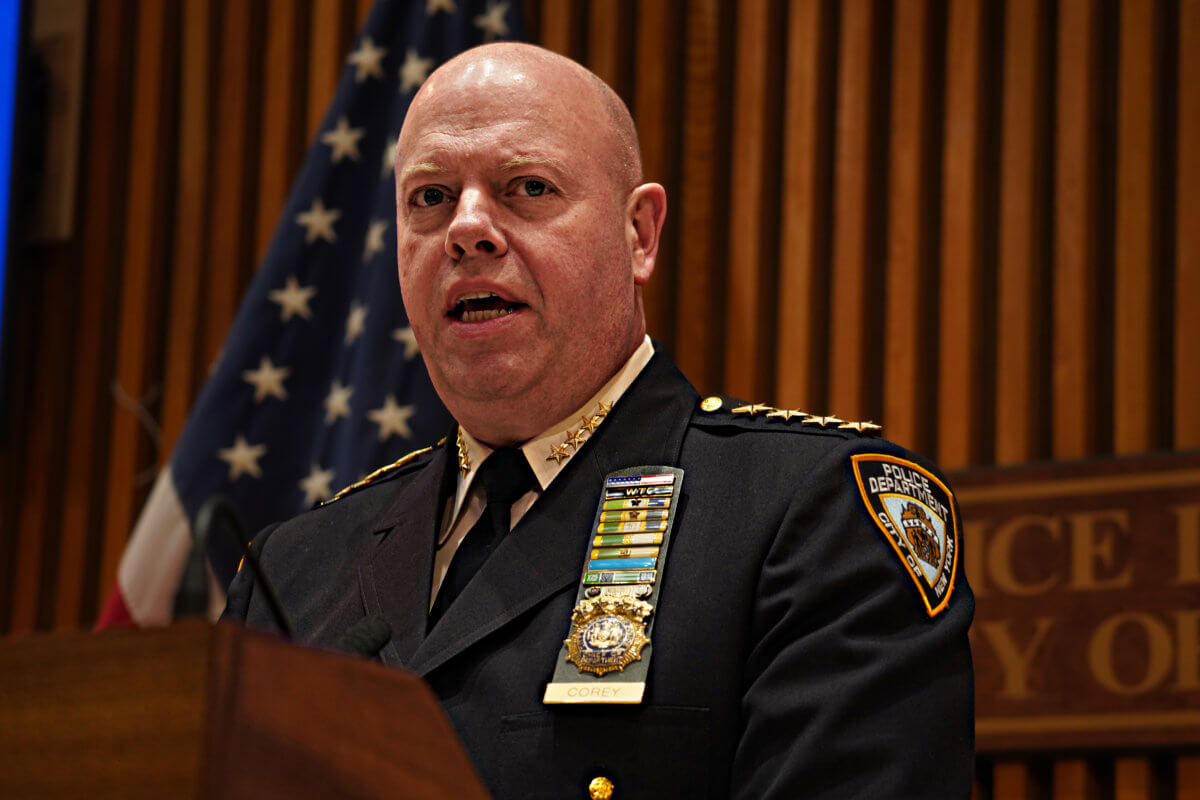
The commissioner also touched on one of the safety unit’s most contentious topics–their outfits. Many New Yorkers have been concerned that they will be in civilian clothes and indistinguishable from pedestrians, something Sewell rebuked.
“They look like police officers. They are not in plain clothes, their uniform clearly states on the back: NYPD. They are there for the safety of the community and to get the violent offenders off the streets,” Sewell said.
In regards to how swiftly the unit will have an impact on crime, especially gun crime, remains uncertain at this time. While Sewell hopes the difference will be immediately felt, she also adds they will need time to be effective.
The task force will begin on Monday, March 14 and will initially consist of 30 precincts where 80% of violence has been found to occur before slowly being increased. These enhanced public safety units are said to provide support in precincts throughout all the five boroughs concentrating on gun removals. In addition, to ensure a successful task force, according to Mayor Adams’ Blueprint to End Gun Violence, the Neighborhood Safety Teams have additional training, supervision, analytics, and risk monitoring as they work within the communities.
